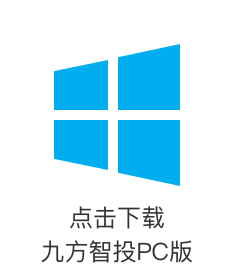1H24 results in line with preannouncement and our expectations
Kinlong Hardware announced its 1H24 results: Revenue fell 4% YoY to Rmb3.21bn, and attributable net profit fell 62% YoY to Rmb4.89mn; in 2Q24, revenue fell 8% YoY to Rmb1.84bn, and attributable net profit declined 26% YoY to Rmb50.76mn, in line with its preannouncement and largely in line with our expectations.
Demand pressure has increased, and growth rates of product categories has varied, with real estate value chain products under heavier pressure. In 1H24, door and window hardware revenue fell 16% YoY to Rmb1.39bn, door control fell 6% YoY to Rmb168mn, and door and window accessories fell 19% YoY to Rmb239mn. Revenue from public building products such as curtain wall structural parts and stainless steel guardrails rose 18% and 17% YoY to Rmb180mn and Rmb98mn.
New product categories (home furnishing and other architectural hardware) performed well, showing that the firm’s efforts to explore new scenarios are gradually paying off. Revenue from home furnishings rose 14% YoY to Rmb590mn, and revenue from other architectural hardware grew 17% YoY to Rmb518mn. The revenue contribution of the new product categories increased by 6ppt YoY to 35%.
Raw materials stable; GM largely flat. In 1H24, the firm's blended GM rose 0.1ppt YoY to 31.3% (30.4% in 1Q24; 31.9% in 2Q24, largely flat YoY). GM of door and window hardware rose 0.6ppt YoY to 39.9%; GM of home furnishings fell 1.2ppt YoY to 29.2%; GM of other architectural hardware rose 1.2ppt YoY to 16.6%; GM of door and window accessories rose 2ppt YoY to 19%.
Falling revenue has driven up expense ratios. In 1H24, the firm's headcount continued to decline. Its selling expenses fell 7% YoY, G&A expenses rose 3% YoY, and R&D expenses grew 5% YoY. The blended expense ratio rose 0.4ppt YoY to 27.9%. In 1H24, the operating expense ratio fell 0.5ppt YoY to 17.1%, the G&A expense ratio rose 0.5ppt YoY to 6.3%, and the R&D expense ratio grew 0.4ppt YoY to 4.2% (the blended expense ratio rose 0.5ppt YoY to 24.8% in 2Q24, dragged by the G&A and R&D expense ratios).
Increased credit impairment dragged net margin. In 1H24, credit impairment was -Rmb83.22mn (vs. -Rmb51.17mn a year earlier), and net margin fell 0.2ppt YoY to 0.2%.
Sound operational quality. In 1H24, the firm's cash-to-revenue ratio fell 18ppt YoY to 90%, but its net operating cash flow rose Rmb238mn YoY to -Rmb190mn due to less cash payment, with receivables up Rmb203mn and payables down Rmb117mn in 1H24 compared with end-2023. The firm had positive net cash with a debt-to-asset ratio of 44% in 1H24.
Trends to watch
Demand is still weak; private placement to support future growth. Looking ahead, we believe demand from completed property projects will remain weak, and the firm will likely maintain resilient revenue by penetrating into lower-tier markets and developing new product categories and scenarios. The firm raised nearly Rmb600mn via a private placement at the end of August. We believe the proceeds will provide strong support for the firm's development of new products and construction of new production bases, allowing the firm to reduce production costs further.
Financials and valuation
Given weak demand recovery and limited release of labor efficiency, we lower our 2024 and 2025 net profit forecasts 48% and 43% to Rmb268mn and Rmb380mn. The stock is trading at 27x 2024e and 19x 2025e P/E. Considering the firm is an industry leader, we maintain an OUTPERFORM rating, but as its valuation is near the bottom, we only cut our target price 29% to Rmb27 (32x 2024e and 23x 2025e P/E), implying 22% upside.
Risks
Weaker-than-expected demand recovery from completed property projects; disappointing increase in labor efficiency; disappointing expansion into new regions.













